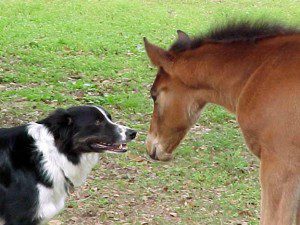About 2% of the world’s population is chronically infected with hepatitis C virus (HCV). This enveloped, positive-strand RNA virus was discovered in 1989, but serological and phylogenetic evidence indicates that it has been infecting humans for hundreds of years, perhaps as long ago as the 14th century. All human viral infections most likely originated in non-human species, but the progenitor of HCV is not known. Recent evidence suggests that horses might have been the source of HCV in humans.
For many years there were no known non-human relatives of HCV until canine hepacivirus was discovered in dogs (we discussed this virus on TWiV #137). However two subsequent studies failed to reveal additional evidence for CHV infection of dogs. In one study, no antibodies to CHV were found in sera from 80 dogs in New York State, and in asecond study, PCR failed to detect CHV nucleic acid sequences in 190 samples from dogs in Scotland. Samples from rabbits, deer, cows, cats, mice, and pigs were also negative for CHV. However both groups found evidence for infection of horses. These viruses have been called non-primate hepaciviruses (NPHV).
In one study carried out on horses in New York State, 8 of 103 samples were found to contain antibodies to NPHV. Complete viral genomes were identified from all 8 horses. Most are genetically distinct from CHV, but one viral sequence, obtained from a pool of sera from New Zealand horses, is nearly identical to CHV. NPHV was also detected by PCR in sera from 3 of 175 Scottish horses. Separate serum samples obtained from one horse 5 months apart were positive for viral RNA, indicating persistent infection. None of the horses had any evidence of clinical hepatitis or any other illness.
These results from geographically distinct areas suggest that horses are a reservoir of NPHV. It seems likely that dogs might acquire NPHV infection from horses, as there are opportunities for contact between the two animals on farms or in kennels. Additional NPHV isolates from horses must be studied to confirm this hypothesis.
It will be important to determine if horse NPHV was the source of human HCV. This is theoretically possible because horse products, such as serum containing antibodies to pathogens or toxins, have been injected into humans. There are six genotypes of HCV, each of which is believed to have emerged at different times and geographic locations. Whether their emergence represent different cross-species transmissions, as is the case with the different groups of HIV-1, remains to be determined.
I also wonder how horses originally acquired NPHV. Perhaps it was transmitted to them from another species via a vector bite, such as a mosquito – but from what species?

Nenhum comentário:
Postar um comentário